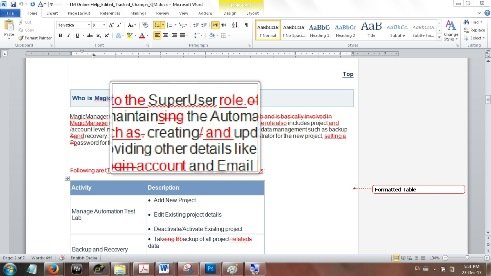Error-free Documentation Needs a Multi-pronged Review Strategy
A quintessential element of quality is accuracy or being free of errors. When we talk of content or technical documentation, the errors may be in language, structuring, or the output layout. Reviews play a pivotal role in delivering accurate content and there are many elements in a content output that need to checked, verified or questioned. Delivering error-free documentation needs a multi-pronged review strategy. Broadly, the review strategy must focus on language accuracy, technical accuracy, the visual elements, content layout and structure. Mostly importantly, the reviews should ensure that the deliverables meet client requirements and expectations. For each of those elements, there has to be a unique review instance. Let’s discuss how to employ various review formats.
Peer Reviews: Usually, the first review should be done by the writer, using some review parameters or a personalized, project-specific review checklist. Only when a writer is sure about the accuracy and completeness of the content, should there be any request for peer reviews. As the name suggests, peer reviews are done by peers, colleagues or team members—preferably from content or documentation team. These reviews are helpful in spotting the errors that don’t catch the originator’s attention because the writers read the text as they thought of putting it and not what they finally brought into writing. In other words, they are prone to ignoring the typographical errors or mistakes in translating their thoughts on the document. Another set of eyes make a difference!
SME Reviews: To check the accuracy of facts, it is best to ask the architects, designers or subject matter experts to review the concepts, descriptions, definitions, and procedures in the product documentation. In case of Supply Chain management software, there could be Supply Chain domain experts or product owners/managers who know how would the product work. They would be in a better position to tell about the precise words that explain it correctly.
Editorial Reviews: The most defining category of reviews that essentially deals with quality of language and expression. This review focuses on the organization of content, the flow of information, the language flow, choice of words, writing styles, locale, length of sentences, audience perspective, clients’ guidelines and any other aspect that affects accuracy, completeness and originality of content.
Functional Reviews: This category of reviews deals with the visual elements in the content such as graphical content and the look-and-feel of the output. If there are images used in the content then they should be reviewed for language and technical accuracy, and usability parameters that are important to make it accessible for all. The images should have proper captions and alternative text. If the content output is generated using content-authoring tools such as Adobe Robohelp, Adobe Framemaker, Madcap Flare or Adobe Acrobat, then it is recommended to view the final output. In case of web-based content, it must be viewed on various browsers or platforms for which it has been targeted. The linkages among the topics and with the application should also be checked to verify that the appropriate help pages pop up when the user asks for help.
Client Reviews: Last but the most important factor is what does your client say about the content output. It is absolutely mandatory to solicit client feedback for two reasons. The first one being the necessity of getting feedback on your work—to know if you delivered what you promised. The second reason is to gain the approval on acceptance on your delivery. While it is the best thing to meet the promised quality in the first attempt, it is also important to understand and evaluate the client feedback if it demands rework. Incorporating the feedback is so important that if one fails in doing it, the entire review process becomes futile.
Ideally, every milestone should go through Language, SME, Technical, and Client reviews. However, some milestones may not require all of them. For instance, the content layouts and structuring may not require SME or Technical reviews. With a review strategy that builds in the balanced mix of the above-mentioned types of reviews in the content development or documentation development lifecycle, any content provider can be quite sure of producing error-free documentation, subject to other influencing factors such as documented scope of work, requirement understanding, and support from all the concerned stakeholders.


